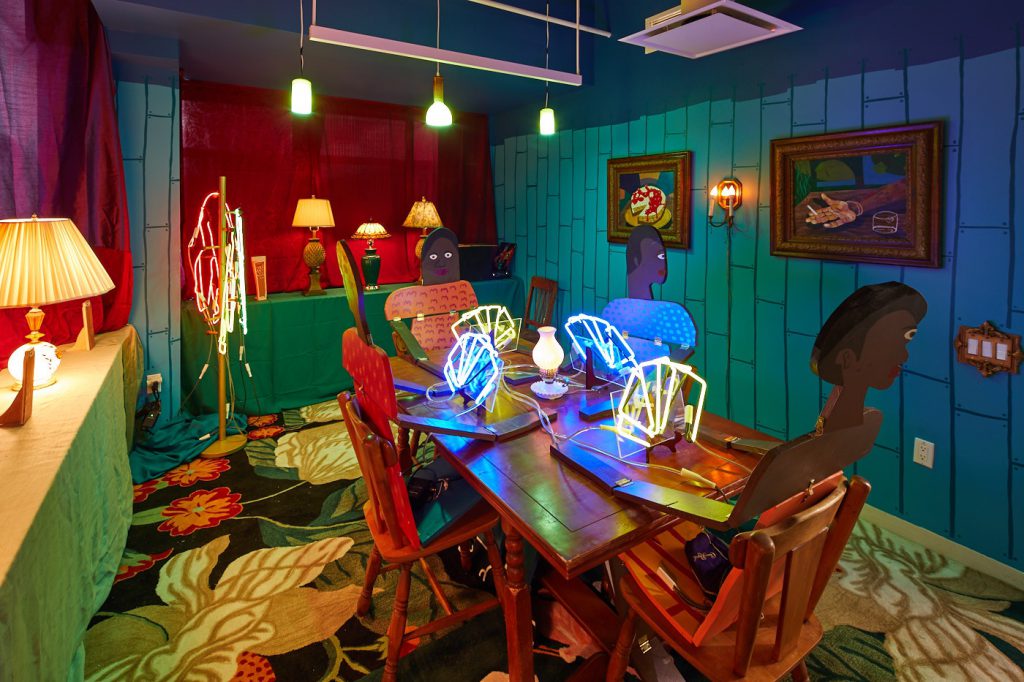
curated by Ambre Kelly & Andrew Gori.
Photo: Samuel Morgan.
It seems almost comical that this year’s theme for the SPRING/BREAK Art Show in New York is “IN EXCESS.” I feel obligated to ask: When was that never the case? Celebrating its ninth edition in the borough of Manhattan, the preeminent satellite fair of New York’s Armory Week, has always celebrated surplus, overabundance, and superfluity: a glut display of colorful, flashy, weird, and quite often, large-scale immersive, and exiting, artworks.
It may of be note that this year’s fair has over 800 artworks on view, all housed for the first time in the former Ralph Lauren offices on Madison Avenue. The new locale is rife with the usual trademarks of the fair—a healthy dose of untended cubicles, and a suite of elevators that are programmed to only take you from the lobby to the art show and back. The space, however, does grant this year’s art show a swathing element of posh, or even a sense of extravagance and wealth. But SPRING/BREAK still felt very much the same as previous years, with works centered on very similar topics of recent past iterations: Trump, plutocracy, climate change, capitalism, queerness and sexuality, race and identity, and immersive artistic play.
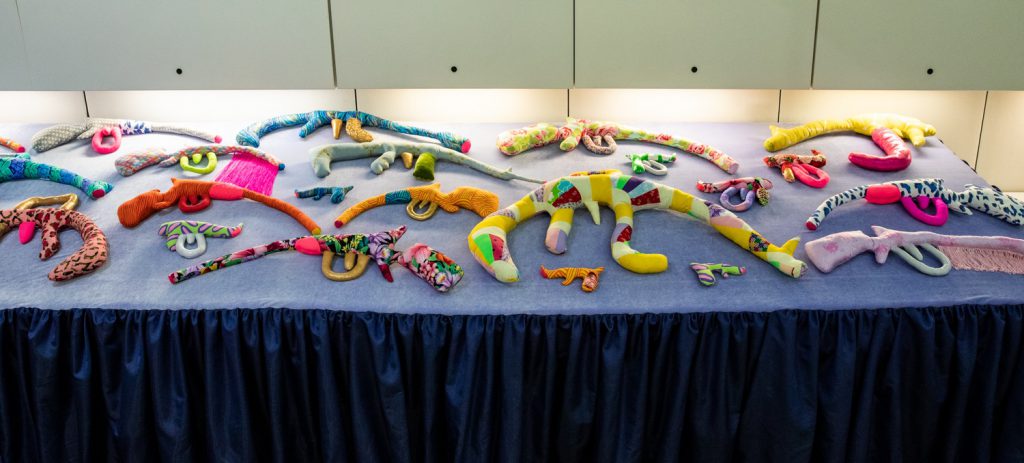
curated by Lauren Wolchik.
Photo: Joshua Simpson.
The fair still has its symbolic grime and dirt to its overall aura and method of operations, even if there are a great many white walls that prop up the work this time around. But perhaps what makes this year’s SPRING/BREAK stand out from the rest, is that overall the show feels less experimental and more polished; less unfinished and glossier—it’s flourishing into something that clearly feels more established.
This development is evident in Azikiwe Mohammed’s booth—a crisp and well executed installation of the artist’s own paintings and other artist-made objects within the framework of recreating the iconic Subway Lounge—the famed jazz club in the basement of the Summer Hotel in Jackson, Mississippi. The work features a table with painted effigies of African American men playing cards that are represented by flashing neon lights. The space also includes wall-to-wall floral carpeting, a careful arrangement of custom-made lamps, and Mohammed’s signature paintings—intimate scenes related to African American life.
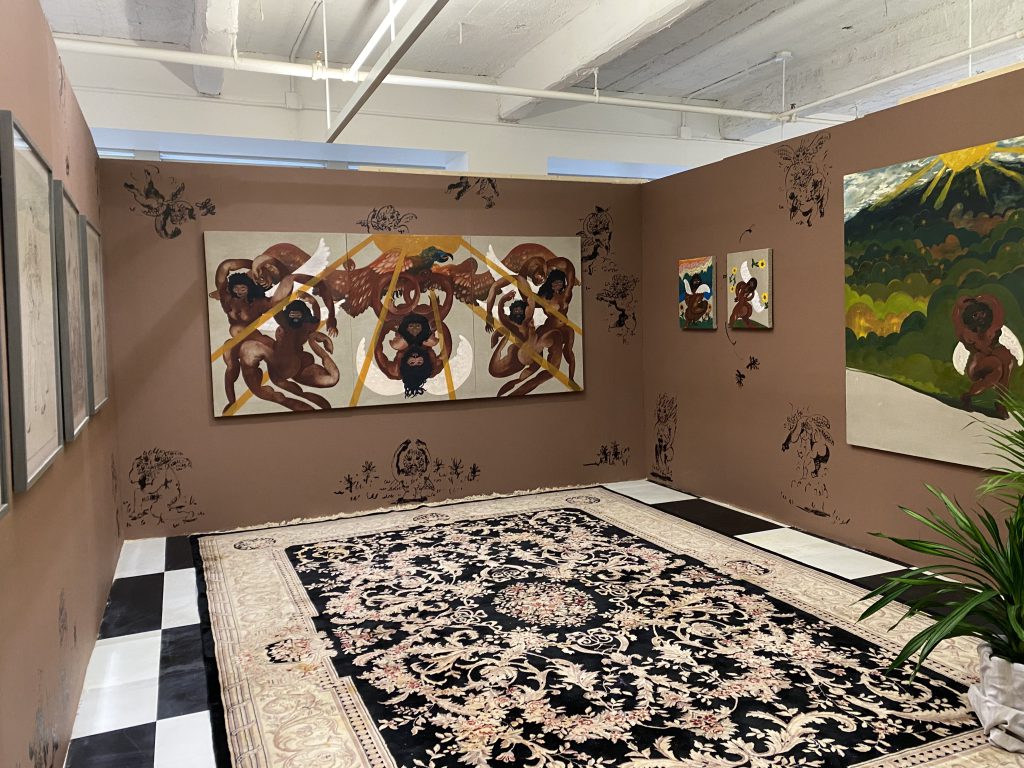
curated by Anne-Laure Lemaitre.
Photo: Samuel Morgan.
The dynamic artist has been a fixture of SPRING/BREAK since 2013, and has become a go-to favorite of the fair’s founders, Andrew Gori and Ambre Kelly—a true testament to Mohammed’s talent and artistic vigor. In the past, Mohammed has presented more sprawling and ambitious works, that although remarkable achievements in and of themselves, were often hastily executed, much like Our Futures A Present #1 (2017), a full-scale immersive installation that showcased found-footage video of daily aspects of black life. The work was first exhibited at SPRING/BREAK BKLYN IMMERSIVE—a redux edition of that year’s fair in Brooklyn—and perhaps suffered from the ad hoc approach to the show. Nevertheless, the work was moving and indicative of the artist’s larger concerns about the emergence a black ontology within both public and private African American spaces. This year, Mohammed presented work that was equally provocative, yet more subdued and judicious with its offerings. The cuts of fabrics that lined the walls were cleaner, and the overall presentation of the space was expertly finished—proof, dare I say, of Mohammed’s maturation as an artist.
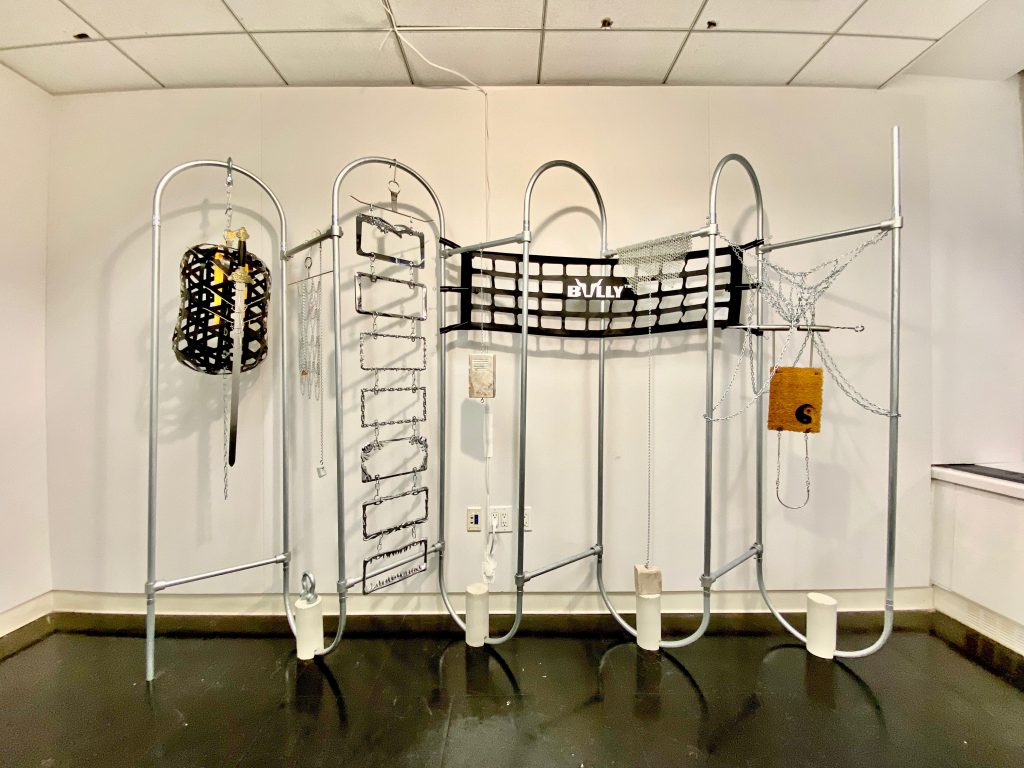
Steel, Coco fiber mat, marble, cement, sandstone, nylon,
80 x 108 inches.
Image courtesy Sarah Han.
Other examples include Natalie Baxter’s “Guns Guns Guns”—curated by Lauren Wolchik—a beautiful, comical, and abundant display of plush toys of handguns and assault rifles; and Asif Hoque’s “A Loverboy’s Tale” curated by Anne-Laure Lemaitre, a series of charcoal drawing and oil paintings of brown cherubs and angelic figures. Both artists present works with such exuberant playfulness and political heft that they are equally intellectually engaging and enjoyable to look at—tightly conceptualized bodies of work that deal with the complexities of gun violence in the US, and the issue of representation in religious iconography, respectively.
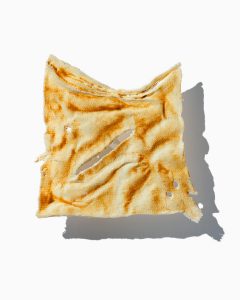
Pate de verre, glass powder, hardware,
16 x 151/2 x 2 inches.
Image courtesy Sarah Han.
Additionally, in “Saunter,” curator Sarah Han brings together the work of Martyna Szczęsna and Sam Chun, two artists who both work in sculpture and installation. The dialogue between their works, apart from their penchant for image making, is a concern for screens and veils, both physically and conceptually. Szczęsna Pate de Verre sculptures—a glass technique using crush glass and a kiln to mold often impossible looking objects—are drape-like structures; fragile translucent scrims that hang on artist-made structures. Chun, on the other hand, reclaims the structure of byung poong—traditional Korean folding screens that were a sign of wealth and status—but here presents transparent panels made of steel piping, and with found or made objects strewn about: a collection of chains and hooks, channeling BDSM and sexual promiscuity. Both bodies of work are quite striking, and confront the precariousness of putting up a veil over our own social proclivities, and the fragility of privacy.
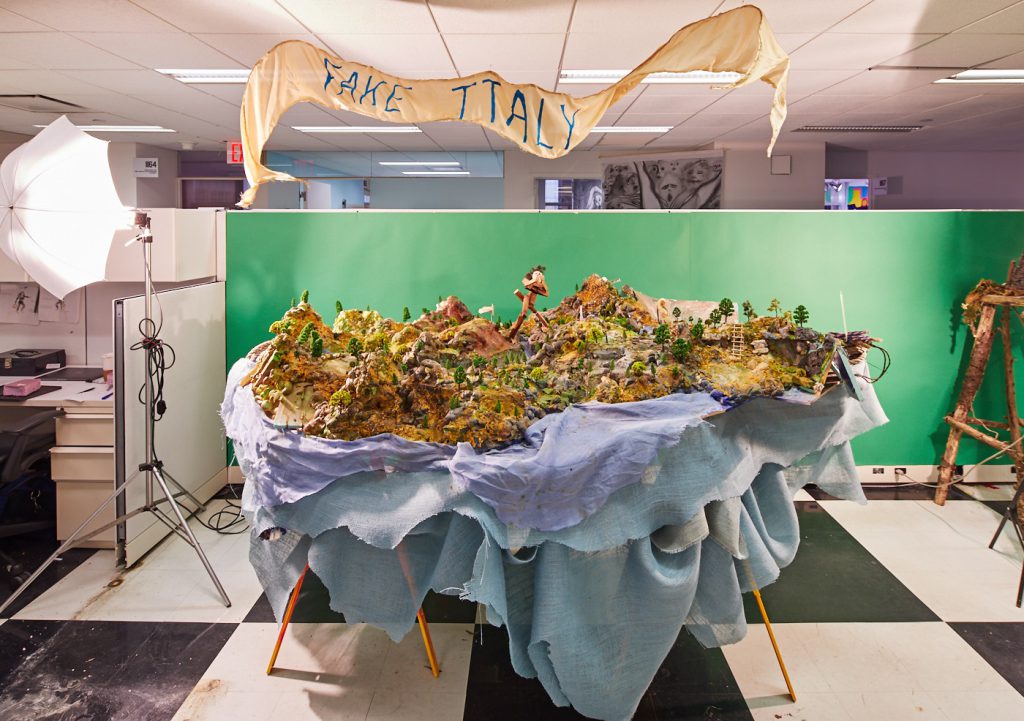
Geppetto Jouissance” at SPRING/BREAK,
curated by Julia Simpson.
Photo: Samuel Morgan.
Finally, one project that may still harken back to the era experimentation that SPRING/BREAK is so known for, is Z Behl’s “Geppetto Renaissance, Geppetto Jouissance.” Curated by Julia Simpson, the ambitious project, in addition to presenting paintings and sculptures by the artist, involves working with different collaborators to do a “shot for shot” remake of Behl’s short film Geppetto (2019)—a queer take on Carlo Collodi’s classic tale of Pinocchio. The project runs itself like true film production, featuring an off-site editor who will be working on cutting the film in real time, presenting dailies to viewers. Passersby can also join in and help in the production, and experience something that pushes the boundaries of what art and film can look like and achieve in the most playful and creative way.
Text © Terence Trouillot 2020